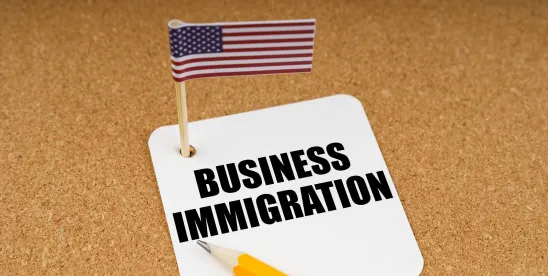The line between permissible business visitor activities and unauthorized employment has come under heightened scrutiny. A recent large-scale raid – where foreign nationals were found working on B-1/ESTA entries – demonstrates how costly missteps can be.
When a B-1 Visitor or ESTA Is Appropriate
The B-1 business visitor visa (and ESTA under the Visa Waiver Program) authorizes foreign nationals to enter the United States for limited business purposes. The Department of State defines permissible activities in the 9 FAM 402.2-5. Key examples include:
- After-Sales Service: Installing, servicing, or training U.S. workers on machinery or equipment purchased from a company outside the United States, when required by contract of sale (see 9 FAM 402.2-5(E)(3)). Ensuring that any outside companies at your worksite are following federal immigration laws.
- Training: Receiving training in the United States from a parent, affiliate, or related company, provided the training is not available in the home country and does not involve productive employment (9 FAM 402.2-5(F)).
- Proprietary Knowledge: Employees of a foreign company may enter to share specialized or proprietary knowledge with a U.S. affiliate, so long as the activities are consultative and not hands-on productive work (9 FAM 402.2-5(E)).
- Business Development: Attending meetings, conferences, trade shows, or negotiating contracts (9 FAM 402.2-5(B)).
What Is Not Permitted
- Engaging in day-to-day activities for a U.S. business
- Performing hands-on labor that directly contributes to U.S. operations
- Receiving compensation from a U.S. source for work performed in the United States
Eligibility Under the B-1/ESTA Depends on:
- Nature of the activity (business vs. productive work)
- Source of remuneration (foreign vs. U.S. payroll)
- Duration and frequency of stays (short-term, defined visits vs. ongoing assignments)
Employers should review activities against the FAM guidance and ensure travel is narrowly tailored.
Visa Alternatives to Consider
When business visitor status is not appropriate, companies should explore work-authorized visas. Many allow short-term, intermittent, or part-time structures:
- H-1B: Specialty occupation roles, can be part-time or project-based.
- L-1: Intra-company transferees, including executives, managers, and specialized knowledge staff.
- O-1: Extraordinary ability visa, structured around engagements or projects.
- E-2: Treaty investor visas which allow for the transfer of non-owner employees who have specialized skills that are essential to the operation of a US enterprise.
Training Visa Options: H-3 and J-1
For situations where training, not employment, is the goal:
- H-3 Trainee Visa (9 FAM 402.10): For structured training programs unavailable abroad, provided the training benefits the employee’s career outside the United States.
- J-1 Trainee or Intern: Allows structured programs sponsored by designated organizations, often more flexible but with programmatic requirements.
Companies may also consider developing their own training programs to lawfully host trainees in the United States with proper visa sponsorship.
Why Compliance Matters
The recent enforcement action underscores that the government is closely scrutinizing use of visitor visas. Companies should:
- Audit all B-1/ESTA travel against 9 FAM provisions
- Train business units on permissible vs. impermissible activities
Bottom line: Visitor visas are a powerful tool for global commerce, but they cannot substitute for proper work authorization. Reviewing travel under the 9 FAM 402.2 framework is essential to compliance, business continuity, and protecting your workforce.



 />i
/>i

